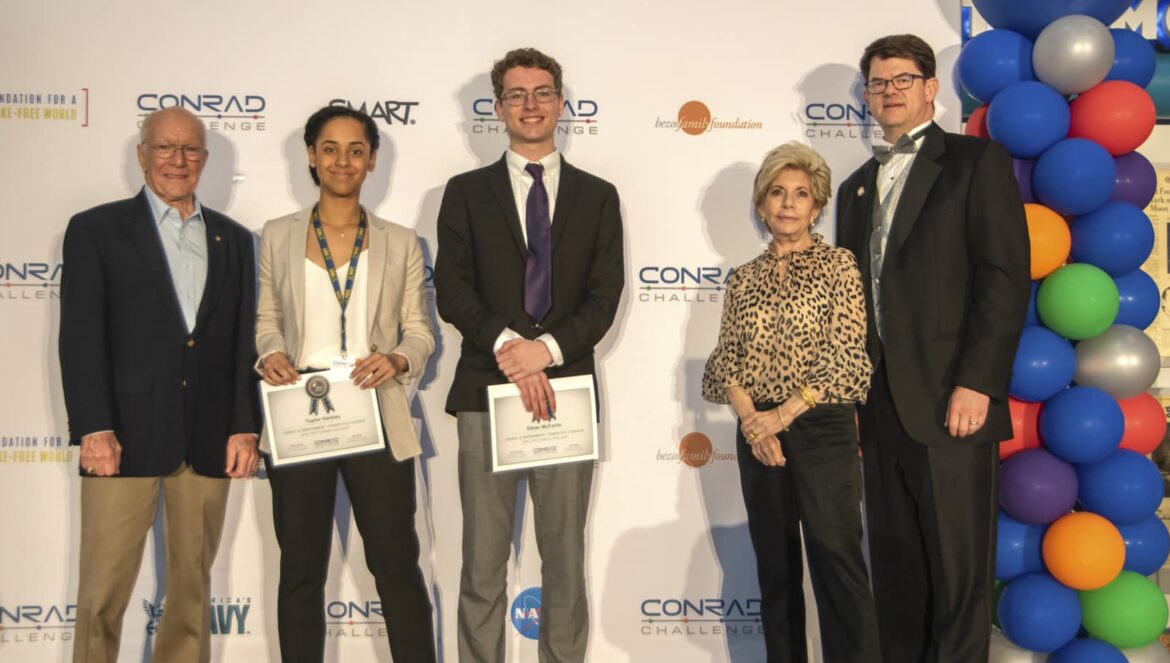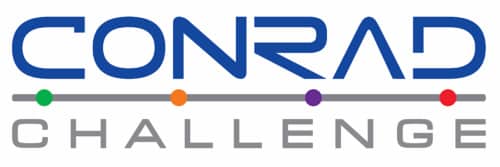An educator shares insights from coaching a student team in the Conrad Challenge
By Ryan Johnson
The 21st century is truly built on STEM skills, including a countless number of different strengths students develop through their education journey that have lasting significance in preparing them to participate―and thrive―in post-secondary education and beyond. It’s an exciting time for teachers in STEM subjects, as we have the opportunity to explore creative techniques for fostering these skills.
Whether we’re discussing truly modern competencies, such as website design or app development for smartphones, or so-called “soft skills” for success, such as the ability to coherently communicate a project, all of these skills have explicit relevance in the STEM-driven world and―if we’re doing it right―all are developed inside the classroom. Our understanding of well-rounded success skills has rapidly advanced in the past several years, and now teachers in the sciences have a greater opportunity to help students learn technical skills alongside broader success skills such as the 4Cs (collaboration, communication, creativity, and critical thinking), and to do so in a real-world context that makes learning far more relevant and engaging.
Learning happens inside the classroom and well beyond the school
No matter what goals a student has set for life after high school and/or college, there are common foundational skills required to flourish. Learners must develop the confidence and ability to anticipate questions, have deep communication skills, and have marketable skills relevant to the needs of the economy. Understanding this, teachers must ensure these targets are woven into our classroom culture and instruction.
Within the traditional classroom, it’s already required for students to hone communication and STEM skills in order to connect and work with classmates, as well as to assert their knowledge and development to teachers. The “safe pressure” presented by working with peer groups and having to step up their skills encourages students to work hard and develop products that they can feel proud about. That being said, our class period is only 53 minutes, far from enough time to fully develop deep, long-lasting skills.
So how do we bridge the gap between the learning time available inside the school day, and the further time for exploration that’s required to engage in problem solving and refine technical and creative skills? One powerful way is to get students to work on their skills outside the class environment, whether in a formal extracurricular program or simply extending their learning at home, and the first step toward making it happen is simply to encourage our students and provide guidance on what they might explore. Showing students resources to encourage them outside of the classroom is key. Until they know about places such as makerspaces, 21st century-styled libraries and media centers, and other excellent community resources, they can feel overwhelmed or under-supported. But once we get them connected with all that’s available, the world opens up.
Innovation and entrepreneurship make STEM transformative
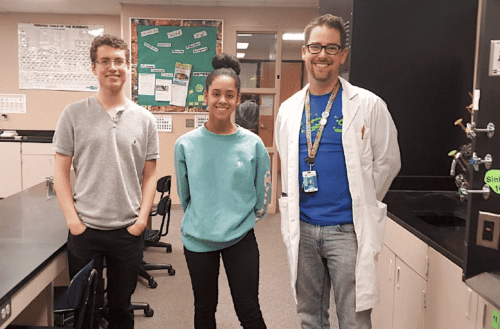 The Conrad Challenge is a global innovation and entrepreneurship competition in which students create solutions to challenges that affect global sustainability. I participated last year as the coach of a team comprised of my former chemistry students Ethan McFarlin and Taylor Harkley, and through the process we all engaged in learning that’s not possible strictly within the confines of the traditional education experience.
The Conrad Challenge is a global innovation and entrepreneurship competition in which students create solutions to challenges that affect global sustainability. I participated last year as the coach of a team comprised of my former chemistry students Ethan McFarlin and Taylor Harkley, and through the process we all engaged in learning that’s not possible strictly within the confines of the traditional education experience.
The competition combines STEM disciplines with entrepreneurship to engage students in designing the future, as well as the opportunity to prepare for success in the global workplace. Teams of up to five students, between the ages of 13-18, innovate new products and services in the following six categories: Aerospace & Aviation; Cyber-Technology & Security; Energy & Environment; Health & Nutrition; Smoke-Free World; and Transforming Education with Technology.
As brand new inventors and entrepreneurs, participating in the Challenge pushed my students beyond the confines of what they previously thought possible. The competition has a diverse set of focus areas and wide latitude for students to develop skills aligned with their interests — they are given a completely open opportunity to identify a global challenge they wish to address and determine the solution they wish to invent―while still being supported and encouraged through educational materials, judge feedback, and peer mentoring. Students get real-world insights from subject matter experts in business, industry, research, and academia, who guide them in turning an idea into a plan for a workable business.
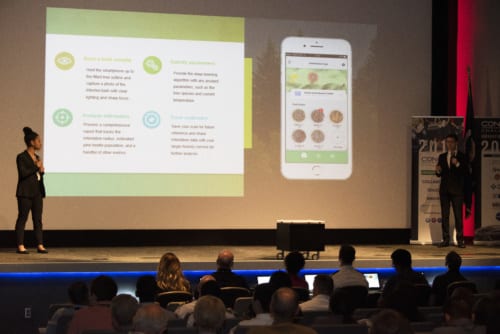 Our team competed in the Energy & Environment category. The students researched, developed, and produced a smartphone app called “PineSight AI,” which utilized learning artificial intelligence neural network technology to analyze tree bark for pine beetle infestation, a huge problem in the forests in our home state of Colorado, as well as elsewhere in the U.S. Through the Challenge process, Taylor and Ethan developed project goals by collaborating with forest industry and computer AI experts, produced a business plan to market and sell their product, and then developed the app itself, working with app developers and software engineers. Needless to say, this required massive amounts of work, learning, and development of the kinds of skills that corporations are looking for in today’s app-driven world.
Our team competed in the Energy & Environment category. The students researched, developed, and produced a smartphone app called “PineSight AI,” which utilized learning artificial intelligence neural network technology to analyze tree bark for pine beetle infestation, a huge problem in the forests in our home state of Colorado, as well as elsewhere in the U.S. Through the Challenge process, Taylor and Ethan developed project goals by collaborating with forest industry and computer AI experts, produced a business plan to market and sell their product, and then developed the app itself, working with app developers and software engineers. Needless to say, this required massive amounts of work, learning, and development of the kinds of skills that corporations are looking for in today’s app-driven world.
The most inspiring moment of our participation in the competition came during the Innovation Summit in late April, where the finalist teams in each of the Challenge’s six competition categories present their pitches to a panel of judges, but it came in a way I didn’t necessarily expect. Even more amazing than touring the facilities at the Kennedy Space Center Visitor Complex in Florida, interacting with NASA personnel and Conrad Challenge founder Nancy Conrad, and even our outings to the beach (which is no small treat for us Coloradans, especially in April), it was watching my students engage in high-level, powerful conversations with peers from around the world that made left a major imprint on my memory. These teens, despite coming together from countries as far away as Malaysia, India, Australia, and the United Kingdom, were all focused on helping one another develop the skills to become world-changing STEM professionals and entrepreneurs. It was incredible to watch them all come together in one place.
Through the year-long Challenge process, my students had to connect with real-world problems―and, although the Challenge is global in scale, we had the opportunity to address an issue of great importance in our own backyard―and come up with novel ways to tackle them. They then had to build their skills in the technology field, along with marketing, business, and entrepreneurship, each of which are invaluable in preparing high schoolers for future success, yet something that few students get to experience until post-secondary education. When facing the college admissions process, seeking internships, and eventually entering the skilled workforce, the experience the students have gained through this competition will continue to pay dividends.
I encourage every STEM educator to find opportunities to help your students create, innovate, and become entrepreneurs. This is how you can build a bridge between classroom instruction and career readiness, even at the middle and high school levels. In my experience, it doesn’t get better than the Conrad Challenge if your aim is to help students become business-savvy, 21st century learners and thinkers. It didn’t just expand what my students thought was possible: it pushed my own understanding and expectations beyond my previous limits. The experience brought a new paradigm to my work as an educator, a new understanding of how to encourage my students to reach new heights, and even a new perspective on the possibilities of STEM itself.
This article was originally published in the September 2019 issue of STEM Magazine
About Ryan Johnson
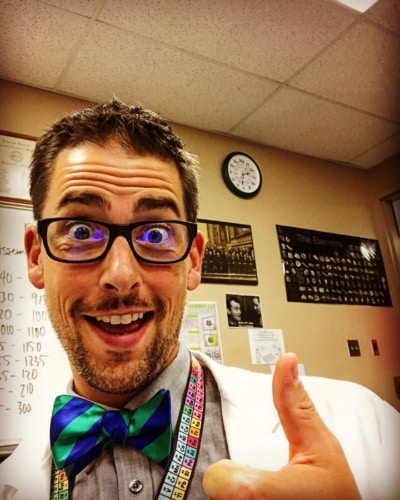
Ryan Johnson, MSc, is a chemistry teacher and cross country coach at Doherty High School in Colorado Springs, Colo. He is also the president of the Colorado Association of Science Teachers. Follow Ryan on Twitter @RyTriGuy
Registration for the 2019-20 Conrad Challenge is open through November 1, 2019. Educators, students, and subject matter experts can learn more about the Challenge and learn how to get involved by visiting https://www.conradchallenge.org/
Further Reading
- edCircuit – The Life of an Aerospace and Aviation Innovator
- eSchool News – 10 reasons to use AR and VR in the classroom
- Forbes – New Research On How We Teach STEM Is Promising


